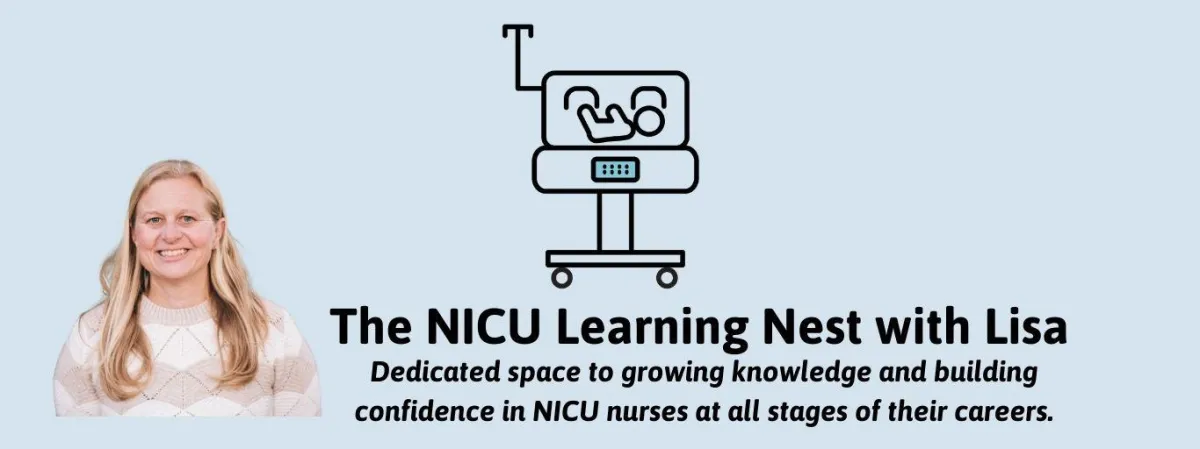
Hydrops Fetalis for NICU nurses
💧 When Everything Fills: Understanding and Caring for the Hydropic Newborn
In the NICU, few diagnoses capture the complexity of physiology and teamwork like hydrops fetalis. It’s one of those moments where every system seems to be working against you—and yet, with preparation and understanding, it’s also one where expert nursing care can make all the difference.
Hydrops fetalis isn’t a disease itself. It’s a manifestation of something deeper—a sign that the fetus or newborn has reached the edge of compensation. Fluid has built up in at least two body compartments, often the skin, chest, or abdomen, because the baby’s heart and lymphatic systems simply can’t keep up. Some cases are caused by immune incompatibilities, but most today are nonimmune hydrops, linked to conditions like cardiac malformations, anemia, infections, or genetic disorders.
🫁 The Physiology Behind the Fluid
When the heart can’t pump effectively, venous pressure rises and fluid seeps into tissues. Add low protein levels or poor lymphatic drainage, and the result is a baby born swollen, breathless, and fragile. These infants arrive with pleural effusions, ascites, and profound edema—and it’s the nurse’s calm, coordinated actions that start the process of recovery.
Hydrops care begins before delivery ever happens. If the diagnosis is known prenatally, maternal–fetal medicine and NICU teams prepare together. Having chest-tube trays, suction set to –20 cm H₂O, drainage systems labeled, and blood products ready isn’t just about readiness—it’s about giving the baby a chance to breathe within the first moments of life.
💨 Stabilization and the First Hours
Ventilation can be challenging because the lungs are literally compressed by fluid. Early drainage through thoracentesis or chest tubes can immediately improve oxygenation, but every intervention shifts the baby’s physiology. A drain that relieves pressure may also drop blood pressure as circulation redistributes, so close hemodynamic monitoring is critical.
These babies often appear fluid-overloaded but are intravascularly depleted. They require careful, guided fluid resuscitation—enough to support perfusion but not so much that edema worsens. Pressors like dopamine or milrinone may be needed to maintain cardiac output, while diuretics and albumin play a role later in recovery.
💉 The 24–48-Hour Mark: When Complexity Grows
By the second day of life, most hydropic infants are on multiple infusions: glucose or TPN, antibiotics, calcium, inotropes, and often blood products. At this point, line organization becomes a patient-safety issue.
Use double-lumen umbilical lines when possible, with clear labeling and dedicated ports for pressors or blood.
Anticipate adding peripheral or additional central access as medications increase.
Always confirm compatibility using your institutional chart, UpToDate, or pharmacy before starting new infusions.
Organization at the pump may sound simple, but in critical care it’s a lifesaving skill. The nurse who stays two steps ahead keeps the entire team grounded.
❤️ Beyond the Physiology: The Human Side
Families are often overwhelmed when they first see their baby with hydrops. The swelling, tubes, and drains can make connection feel impossible. It’s our role to normalize the equipment, explain what each intervention does, and offer safe ways for parents to touch or talk to their baby. Sometimes, holding will be delayed until the patient is stable—but inclusion should never be postponed.
Hydrops fetalis can carry a guarded prognosis. Outcomes vary widely depending on the cause, but even in the most complex cases, compassionate communication and consistent updates give families something solid to hold onto when everything else feels uncertain.
🌱 Final Thoughts
Hydrops fetalis reminds us that neonatal nursing is both science and art. These patients demand technical skill—ventilation, drainage, transfusion—but they also require empathy, anticipation, and trust in your team.
When you prepare your environment, plan your lines, and stay calm amid the alarms, you’re not just managing a crisis—you’re creating space for stability to begin.
Every hydropic newborn teaches us the same lesson: preparation is power, and presence is care.
